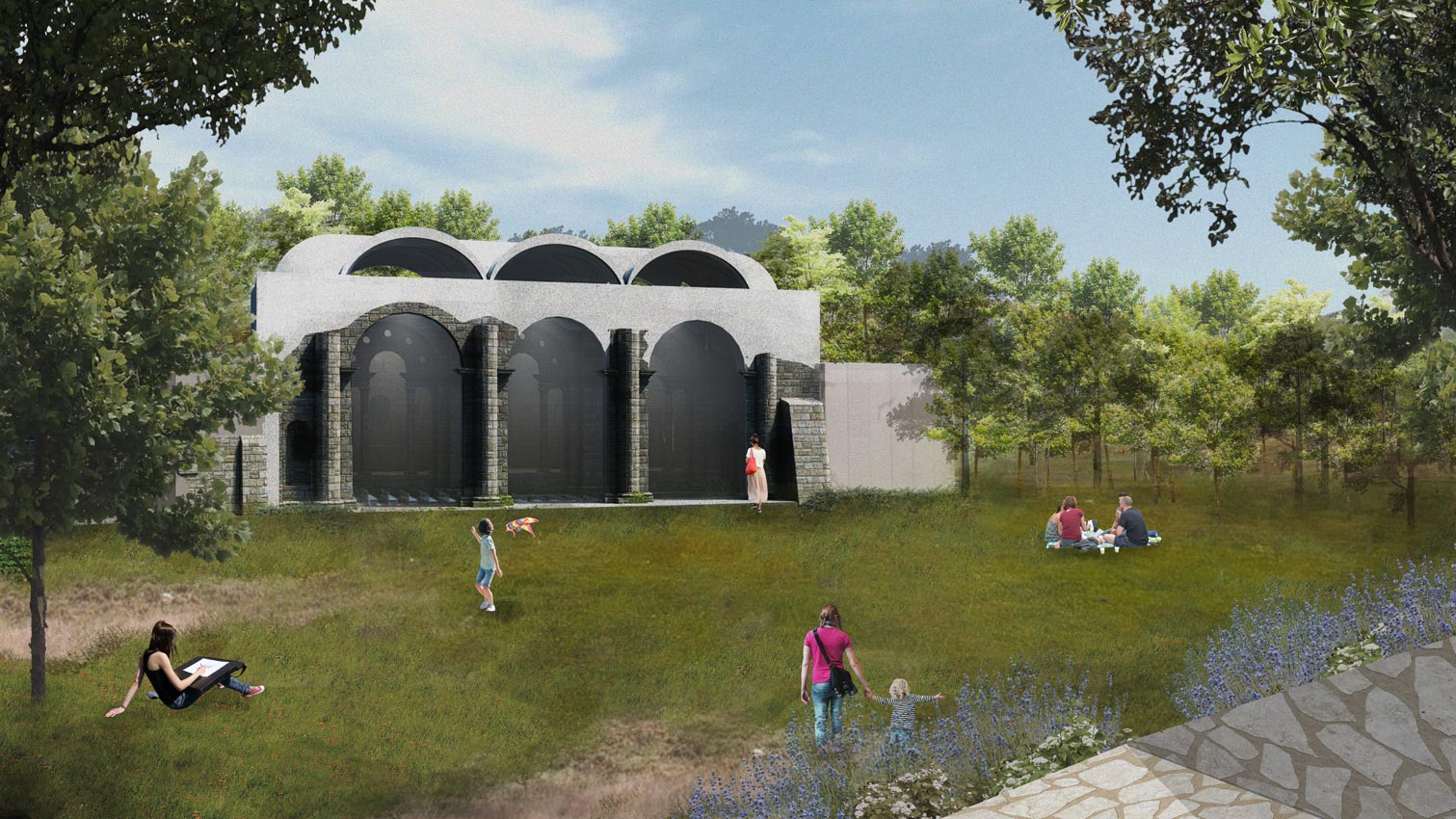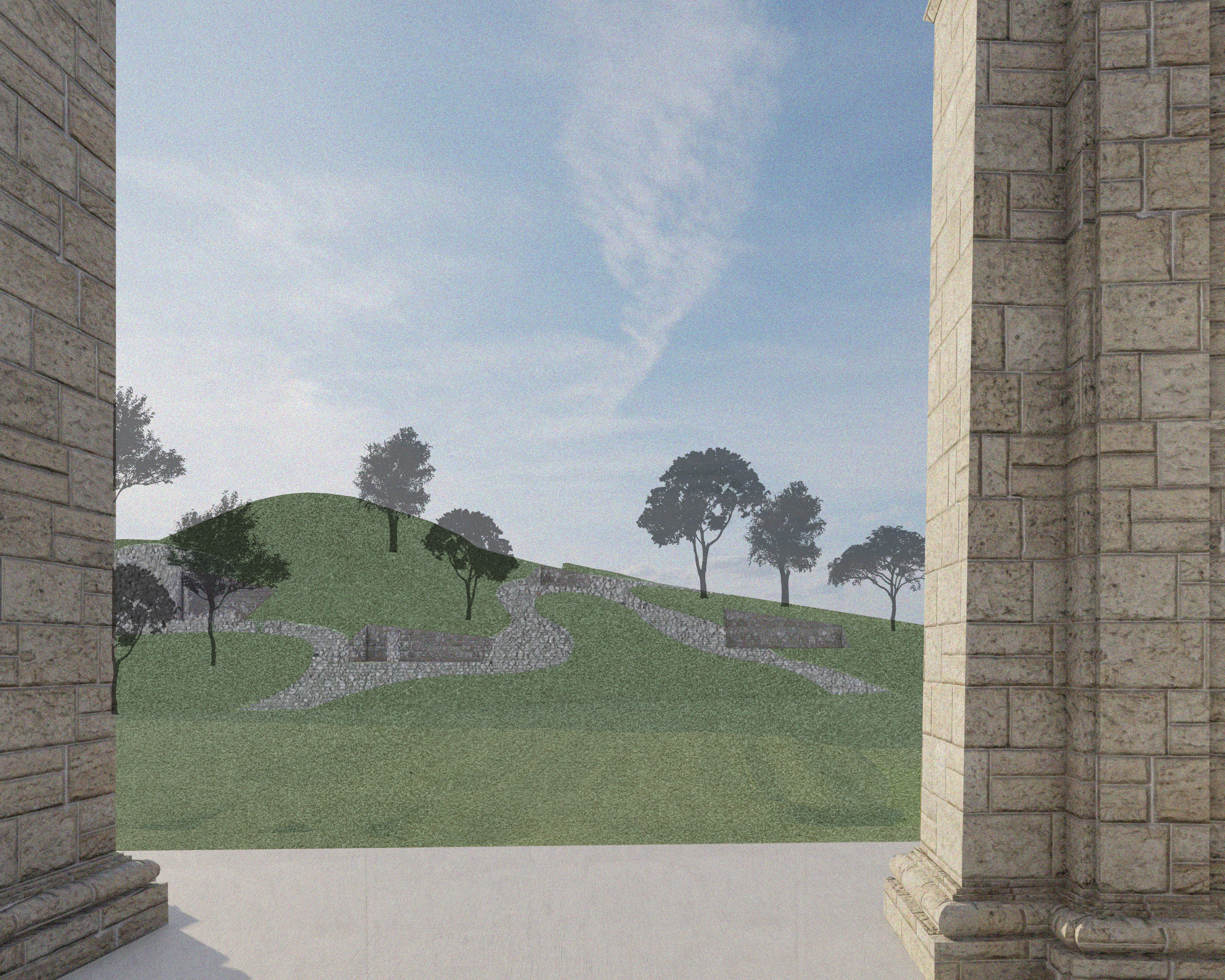
We don’t like to leave things unfinished. Our design approach is characterized by a subtle and respectful approach, with discreet design decisions that preserve the ancient Roman ruin of Bramante's vision. We aim to take inspiration from both the challenges and successes of Bramante's original vision and breathe new life into this abandoned ruin.
The garden behind the theater serves as a community node, a gathering space for both small late night picnics and an outdoor setting for the politics and presentations of town hall meetings.



Glass cradles masonry and masonry cradles glass. Essentially “completing” the project, the original Nymphaeum sits pavilion-like, lacking enclosure on 5 fronts, at the base of the valley in Genazzano.
The new structural and insulatory elements in frosted glass will respect the existing regulating symmetricality in overall form while introducing the necessary programmatic considerations.

The glass between gallery and theater serves its purpose two fold: insulation in sound and semi-insulation in visibility.

We don’t like to leave things unfinished. Our design approach is characterized by a subtle and respectful approach, with discreet design decisions that preserve the ancient Roman ruin of Bramante's vision. We aim to take inspiration from both the challenges and successes of Bramante's original vision and breathe new life into this abandoned ruin.
Is it possible to bring life back into this abandoned ruin?
Part-to-Whole
Winter 2023
Winter 2023
Genazzano, Rome
Collaboration with Anh Nguyen, Ray Ho, Yucheng Che
Re-Use Italy Competition
Adaptive Reuse
Is it possible to bring life back into this abandoned ruin?
Embracing history means embracing its
contemporary consequences. We strive to
mend the rift between a narrated “past” and
a perceived “present” through meaningful
conversations in and through material cultures
and architectural forms.
Adaptive Reuse
Is it possible to bring life back into this abandoned ruin?
Embracing history means embracing its
contemporary consequences. We strive to
mend the rift between a narrated “past” and
a perceived “present” through meaningful
conversations in and through material cultures
and architectural forms.



